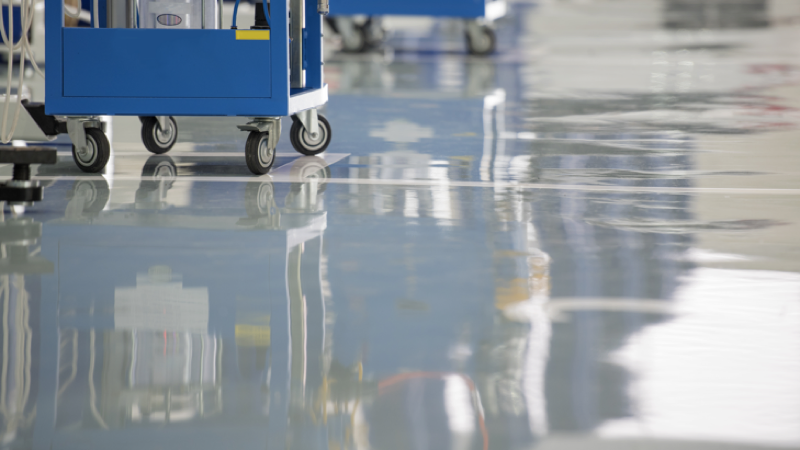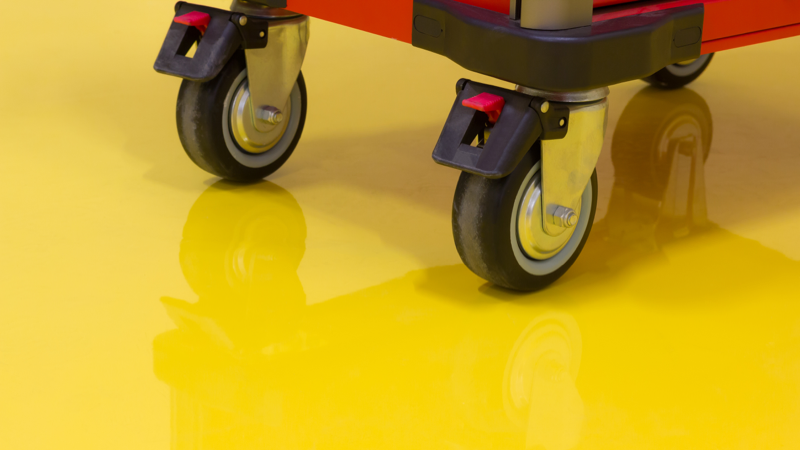Flooring / US / Exploring Four Types of Anti-static Agents for Conductive Flooring

Author: Philippe Bichot
3 minutes read
EXPLORING FOUR TYPES OF ANTI-STATIC AGENTS FOR CONDUCTIVE FLOORING
What is the most essential parameter for you when choosing a conductive filler? Is it the required loading, the price, its influence on color and smoothness of the floor surface, or the stability of anti-static properties over time?
 |  |
Achieving the targeted uniform conductivity level in epoxy and polyurethane self-leveling static dissipative floors is heavily dependent on choosing the right anti-static additive. This article compares chopped and milled carbon fibers, graphene nanotubes and antimony tin oxide (ATO), and identifies the so-called “price per property” for each conductive filler.
| Parameter | Chopped carbon fiber | Milled carbon fiber | ATO | Graphene nanotubes |
|---|---|---|---|---|
| Working dosage | 1—4 wt. % | 1—10 wt. % | > 10 wt. % | 0.01—0.04 wt. % |
| Resistance range (surface to ground) | 1011-104Ω | |||
| Black dots on surface | possible | yes | none | none |
| Available color range | wide | limited | limited | wide |
| Floor thickness | min 2 mm | min 0.5 mm | up to 16 mils | any |
| Resistance remains stable after abrasion defects on surface | problematic | yes | yes | yes |
| Influence on mechanical perfomance | small negative | strong negative | small negative | none |
| Influence on rheology | small negative | strong negative | small negative | acceptable |
| "Hot spots" (resistance varies on surface) | possible | possible | possible | none |
| Stable resistance over time | yes | yes | yes | yes |
| Settling during storage | possible | possible | yes | minimal |
| Cost of anti-static property | acceptable | acceptable | high | acceptable |

Strengths: | Weaknesses: |
Carbon fiber is the most frequently applied anti-static agent for static dissipative flooring. Together, chopped and milled carbon fiber represent more than a half of the whole self-leveling anti-static flooring market share. They comprise 10–15 µm diameter carbon fibers based on coal tar pitch that are either chopped to a length of 2–6 mm or milled to a length of 0.13–2 mm. The working dosage for chopped carbon fiber is 1–2 wt.%, while for milled carbon fiber it is 1–6 wt.%. Both of these carbon fiber options have a good price per property ($0.2 – $1.5) because of the relatively low initial fiber price and concentration required.
However, because of the length of chopped carbon fiber (2 mm or longer), the thickness of the top/base layer must be at least as much. This limitation results in increased costs, as the top/base layer accounts for almost 60% of the total cost to the customer. Anti-static flooring with chopped carbon fiber has a better appearance than flooring containing milled carbon fiber, but is more sensitive to installation defects, and suffers from the occurrence of insulating “hot spots”.

Strengths: | Weaknesses: |
Conductive pigments, such as antimony tin oxide (ATO), are usually supplied in powder form. ATO has the highest price per property at around 5–12 $/kg, which is a result of the high initial high price of the additive combined with the high working dosage required of 8–20 wt.%.
Antimony tin oxide has a negative impact on the color of the floor the due to its high loading rate. Applying this anti-static pigment coating, applications are limited to 16 mm. Otherwise, if the coating is thicker, the ATO will settle, leaving an insulative surface. And because most ATO systems incorporate the ATO as a part C, variations can appear from mix to mix, resulting in “hot spots” or “dead spots”.

Strengths: | Weaknesses: |
Graphene nanotubes (also known as single wall carbon nanotubes) are a relatively new product that is now being welcomed by the market. Their key advantage in comparison with traditional anti-static additives lies in the extremely low working dosage required to achieve the targeted level of conductivity – from as little as 0.01% of the total compound weight.
Thanks to their small diameter and high aspect ratio, this minimal dosage of graphene nanotubes is sufficient to create a uniform conductive network. Extra-low working dosages open the door to reducing the thickness of the ESD coating (as low as 25 microns DFT) and to a full color palette. Graphene nanotubes help to significantly reduce installation and maintenance time, yielding additional cost savings. Learn more about the performance of graphene nanotubes in ESD flooring
OCSiAl produces TUBALL graphene nanotube concentrates for anti-static epoxy and polyurethane flooring that make it easier to apply nanotubes in a standard manufacturing process. Request a sample of nanotube concentrate that suits your ESD flooring formulation:
If you have any questions or need assistance with choosing the most effective graphene nanotube solution for your compound, please contact our experts.
Contact us to discuss your project specifications or to request a TUBALL™ MATRIX sample


